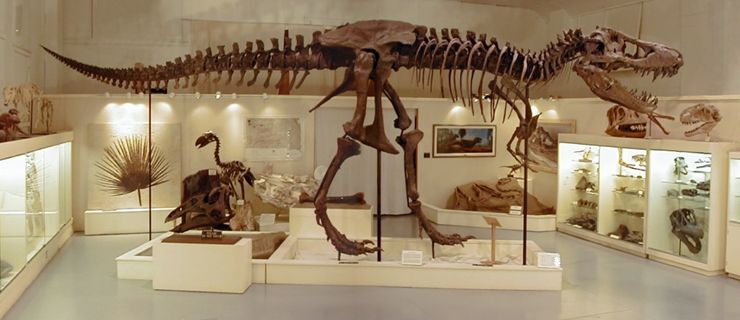Meet Stan, The World's Most Expensive Tyrannosaurus Rex Fossil
Language
Reading Level
Listen to Article

On October 6, 2020, an anonymous buyer paid an astounding $27.5 million ($31.8 million with fees and costs) to own Stan, one of the world's largest and most complete Tyrannosaurus Rex (T. rex) skeletons. The price far surpasses the previous record holder, Sue — the largest and most complete T. rex skeleton — which was auctioned to Chicago's Field Museum of Natural History for $8.36 million in 1997.
James Hyslop, Head of Christie's Science and Natural History department, says, "I’ll never forget the moment I came face to face with him [Stan] for the first time, after his remount in Colorado – he looked even larger and more ferocious than I’d imagined, a specimen that only further establishes the T. rex’s position as the King of Dinosaurs.”
The bidding, which took place at Christie's New York office, where the expert appraiser was located, was fast and furious from the start. After blowing past the initial bid price of $3 million, the offers continued to escalate rapidly, and, 14 minutes later, only three potential clients remained. Soon after, it was down to two anonymous buyers in London and New York, and after a tense few minutes, the British collector reigned supreme with a $27.5 million offer — about four times the $8 million sale price originally estimated by the British auction house.

Stan is named after Stan Sacrison, an amateur paleontologist who first unearthed the T. rex's remains in 1987 on private land in the Hell Creek formation. The area, which stretches over portions of Montana, North Dakota, South Dakota, and Wyoming, is famous for its dinosaur fossils. However, Sacrison was discouraged from searching further by a scientist, who mistakenly identified the fossils as those of the plant-eating Triceratops dinosaur.
The ferocious predator lay undisturbed until 1992, when paleontologists from the Black Hills Institute for Geological Research (BHI) recognized the fossils' true origin and decided to excavate further. It took them more than 30,000 hours of labor to unearth all the perfectly-preserved bones and restore the T. rex to its full glory. However, the effort was well worth it.
Measuring 13 feet tall and 40 feet in length with the tail extended, Stan's 188 bones represent about 70 percent of the full skeleton. Even more impressive, Stan's almost complete and perfectly-preserved skull, which could hold as many as 58 teeth, is widely regarded by scientists as the best T. rex skull ever discovered.
After headlining at the T. rex World Exposition, a yearlong tour that opened in Japan in 1995, Stan found a permanent home as the star attraction of BHI's dinosaur collection in Hill City, South Dakota. He remained there on public display until the recent auction.
Over the years, scientists have been able to glean invaluable insights from the T. rex, who is believed to have died at the age of 20. The researchers say the dinosaur lived in the humid, semi-tropical region of an island continent identified as Laramidia — an area known today as the Badlands — during the Cretaceous period. While excavating his remains, the scientists found ample evidence of the fierce predator's successful hunts. They included fossilized and partially-digested remains of an Edmontosaurus (a duck-billed dinosaur) and a Triceratops — both formidable opponents even for a T. rex.

However, life at the top of the food chain wasn’t always easy for Stan. Puncture wounds on his skull, cheeks, and lower jaw indicated he was bitten during fights with other T. rexes. Researchers also discovered that his neck vertebrae were fused together near a T. rex tooth-shaped hole, indicated he had healed from a bite to the back of the head. "Stan also suffered a broken neck," paleontologists from the Black Hills Institute wrote, adding, "Apparently, his spinal cord was not severed, or he would not have lived to heal."
Stan's sale, which was allowed because he was discovered on private land, has researchers afraid that he will be forever lost to both science and the public. Unfortunately, BHI was forced to take the action due to a 2018 court order that required them to auction Stan and use the proceeds to settle a shareholder dispute.
In September 2020, the Society of Vertebrate Paleontology urged Christie's to restrict the sale to public institutions committed to curating fossils for the public good, imploring that "scientifically important vertebrate fossils are part of our collective natural heritage and deserve to be held in public trust." With the buyer's identity unknown, it is unclear if the auction house heeded the plea. "I am keeping my fingers and toes crossed that this remarkable fossil stays in the public domain for all to enjoy," Phil Manning, a paleontologist at the University of Manchester, told BBC News.
Resources: Christie's.com, livescience.com, VOA.com, Artnet.com